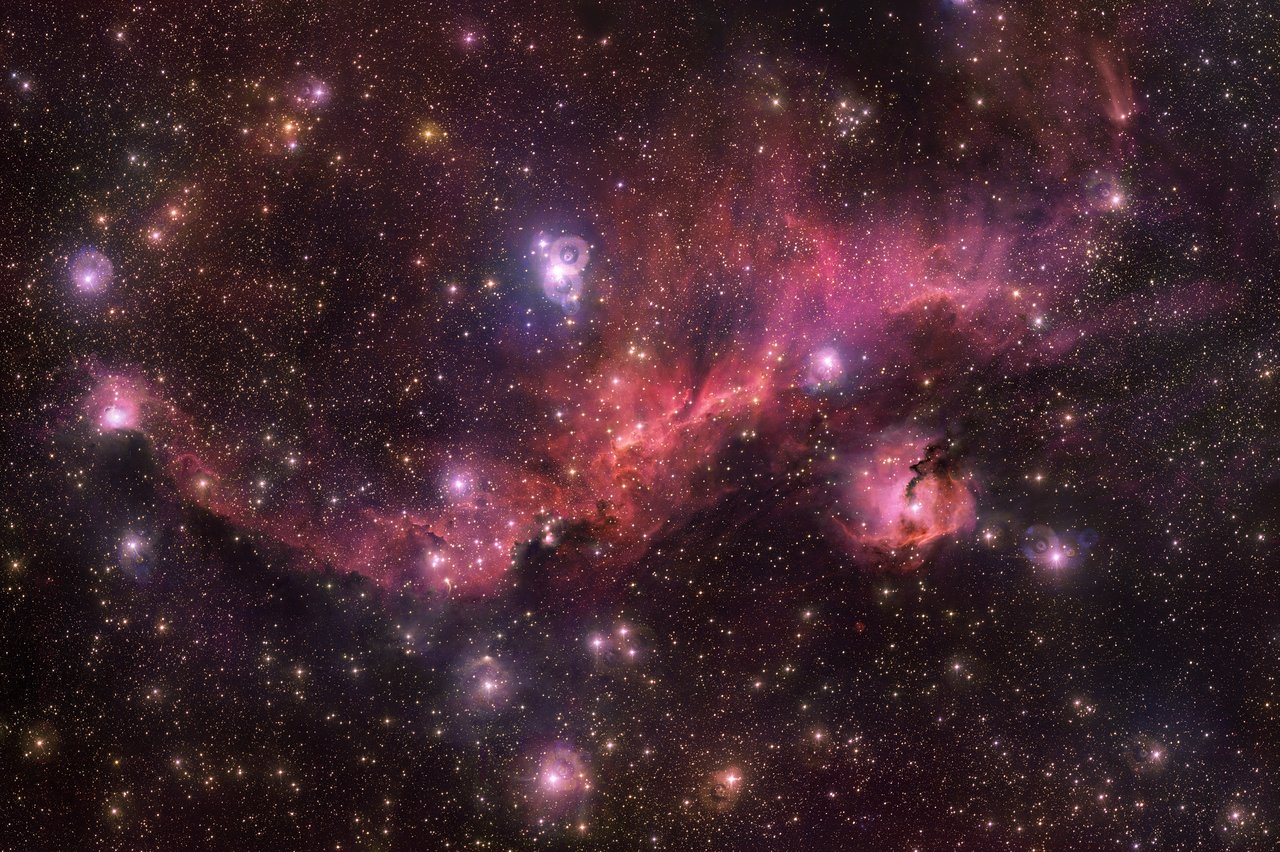
This stunning image shows the Seagull Nebula, so named because its shape suggests a bird with wings spreading out across space. It is located 3,700 light-years away from us, in a distant arm of the Milky Way. It sits between the constellations of Canis Major (The Great Dog) and Monoceros (The Unicorn). The nebula is massive, spanning 100 light-years across, and it was recently shown off in this image captured by the European Southern Observatory’s VLT Survey Telescope.
The Seagull is a type of nebula called an emission nebula, meaning it is made of ionized gases which are ionized primarily by light emitted by a nearby star. Emission nebulae are frequently very beautiful, being targets of some of the most famous Hubble images such as NGC 2174. This particular nebula is a subtype of emission nebulae called an H II region, which is ionized hydrogen gas where stars have recently formed. In the image above you can see the newly born stars across the nebula, glowing brightly.
The new stars give off radiation which ionizes the dust and makes it glow, giving the nebula its beautiful colors. The same radiation causes the clouds to be shaped in particular ways, with the dust being pushed and sculpted into elaborate shapes. Due to the shape of this nebula, scientists believe it is composed of a number of different clouds which met and formed into the bird-like structure.
The nebula is constructed of three primary clouds of gas, including Sharpless 2-296, which forms the “wings” of the Seagull. There is also Sharpless 2-292, the smaller cloud below the wings which forms the “head.” And there is Sharpless 2-297, a small knot of cloud which appears at the top of the tip of the “wing.” They are named Sharpless after the Sharpless Catalogue which lists them, a collection of emission nebula which was compiled in the 1950s by astronomer Stuart Sharpless.



